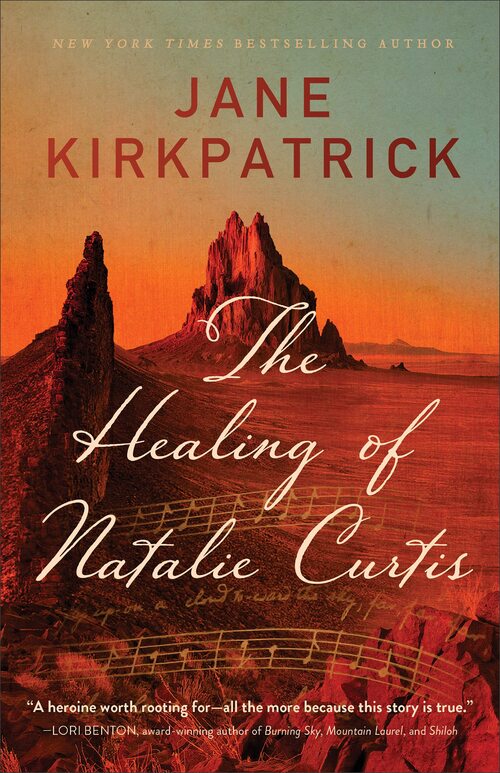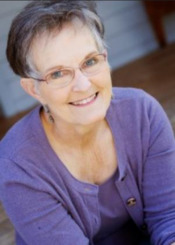The poet Maya Angelou once wrote that as a child “Music was my refuge. I climbed inside the space between the notes and curled my back to loneliness.”
She was in tune with musician Natalie Curtis of The Healing of Natalie Curtis (Revell). Though not a child when she had a mental collapse before her New York Philharmonic debut in 1897, nevertheless she sought her healing in the discovery of the music of the Indigenous people of America’s Southwest.
Her healing reflects what a century later psychologists at Baylor University discovered. They worked with children who had experienced trauma of various kinds: loss of home, death of a parent, abuse. What researchers found is that traditional counseling like I was trained to do as a Clinical Social Worker, was not as effective as movement (dance, woodworking), art (painting, photography); story — reading and writing them; and yes, music. These sensory experiences bypass the critical side and reach the amygdala oblongata, the part of the brain associated with emotion that does not shut down when the rest of a body might go into survival mode, which is where trauma sends us.
I had my own experience with musical healing. When I was a child I had a terrible trauma that my parents never knew about. Its effect manifested in sleeplessness, obsessive behaviors, nightmares, anxiety. Rituals ruled me at bedtime. I had to speak two versions of memorized prayers and If I messed up, I had to start over. And then I began wetting the bed, a shamefulness for a six-year-old. I didn’t know why. Neither did my parents.
My father was a dairy farmer and my mother a nurse. Somehow they knew to place a record player in my bedroom and they put on The New World Symphony by Antoni’n Dvorak. It debuted during Natalie’s time in 1893 in Carnegie Hall. She might even have been there to hear it. It was just a song to me on my record player that I went to sleep by each night.
The thing is, I began to sleep. The need to repeat prayers, worries, and even the bed-wetting stopped. Each morning I felt joyful as though the New World Symphony had brought me a new world, too. I never made the association between the music and my trauma until I was in professional training and learned about the uniqueness of how music enters the brain and lifts the soul.
Of course, most of us have experiences with music that touch our emotions. A song heard when we met our spouses or a piece sung at a loved one’s wedding can take us back in moments to that time. Tears may come but they are healing tears. Some songs might make us laugh so hard we cry and those tears, too, are healing. I always cry a little when belting out Garth Brook’s “Friends in Low Places.” As Washington Irving wrote, “There is a sacredness in tears” and music is often the impetus.
Natalie Curtis — a real historical person who is also the protagonist in my novel — found herself deeply moved by a Yuman Indian song she heard while visiting that Arizona town in 1903. Music had left her when as a child she the piano consumed her ten to twelve hours a day. She practiced so much that her siblings begged her parents to buy her a piano keyboard that simply clicked but had no other sound. Her breakdown left her bereft.
But when her brother invited her to leave New York and come to the Southwest, she heard the unique rhythms and sounds of Indian music. While I worked for a Confederation of Indian People in Oregon, I’d be invited to “Medicine Sings” the evenings were called where drummers and singers sang to help heal whoever was in the room. The music went on for hours. I could never get enough. Natalie couldn’t either.
Natalie soon learned that during her era, Indian lullabies or corn-growing songs were in violation of an 1883 government law, the Code of Offenses. Natalie set about to preserve the songs before they were lost and to get permission for children and elders to sing them without fear of punishment. She and her brother rode and recorded on their Edison Device, the music of the People. And like the Baylor children, the music healed them and Natalie, too.
In our times, we know music can “calm anxiety, ease pain, and provide a pleasant diversion during chemotherapy or a hospital stay” according to Harvard Medical School. An entire field of treatment exists called Music Therapy.
My sister and I used to sing hymns for small group gatherings and in churches. When she became ill and we struggled to figure out what was wrong, it was a gospel song on the radio by CeCe Winans that had me pull over and cry beside the road. My sister was dying and I understood it to the melody of “I Surrender All.”
Following a tragic plane accident that my husband and I survived, my husband watched me dust furniture to a Linda Ronstadt song “I don’t know much but I know I love you.”
“When you finish, I might like to dance to this song,” he said. We hadn’t been able to dance after the accident. Our limbs didn’t like the movements. “If I finish dusting, the song will be over.” So he lifted the lemon-scented dust rag from my hands and we began to dance. We had to make a few adjustments but that’s what life is, isn’t it? That is one of the happiest days of my life. It’s a celebratory song as much as a love song and when I hear it, it reminds me not of healed bones but of a life fully lived, our new world.
That’s another way music heals us, locking memories in our hearts. It wouldn’t be a graduation or a wedding without music nor a funeral, either. Music helps us recall memories not to hold us hostage but to transform us.
I read recently that Neil Armstrong took a recording of “The New World Symphony” with him on Apollo 11 when he walked on the moon. I hope it gave him joy to hear it. Music went with him and when we take music with us, we have a path to heal.
THE HEALING OF NATALIE CURTIS by Jane Kirkpatrick
Classically trained pianist and singer Natalie Curtis isolated herself for five years after a breakdown just before she was to debut with the New York Philharmonic. Guilt-ridden and songless, Natalie can’t seem to recapture the joy music once brought her. In 1902, her brother invites her to join him in the West to search for healing. What she finds are songs she’d never before encountered – the haunting melodies, rhythms, and stories of Native Americans.
But their music is under attack. The US government’s Code of Offenses prohibits American’s Indigenous people from singing, dancing, or speaking their own languages, as the powers that be insist on assimilation. Natalie makes it her mission not only to document these songs before they disappear but to appeal to President Teddy Roosevelt himself, who is the only man with the power to repeal the unjust law. Will she succeed and step into a new song…and a new future?
Award-winning author Jane Kirkpatrick weaves yet another lyrical tale based on a true story that will keep listeners captivated to the very end.
Historical | Christian [Revell, On Sale: September 7, 2021, Paperback / e-Book, ISBN: 9780800736132 / eISBN: 9781493431786]
Buy THE HEALING OF NATALIE CURTIS: Amazon.com | Kindle
| BN.com | Apple Books | Kobo | Google Play | Powell’s Books | Books-A-Million | Indie BookShops | Ripped Bodice | Love’s Sweet Arrow | Libro.fm | Audible
|
Walmart.com
| Book Depository | Target.com | Amazon CA | Amazon UK | Amazon DE | Amazon FR
About Jane Kirkpatrick
A New York Times Bestselling author, Jane Kirkpatrick’s works have appeared in more than 50 national publications including The Oregonian, Private Pilot and Daily Guideposts. With more than 1.5 million books in print, her 30 novels and non-fiction titles draw readers from all ages and genders. Most are historical novels based on the lives of actual historical women often about ordinary women who lived extraordinary lives. Her works have won numerous national awards including the WILLA Literary Award, the Carol Award, USABestBooks.com, Will Roger’s Medallion Award and in 1996, her first novel, A Sweetness to the Soul, won the prestigious Wrangler Award from the Western Heritage and National Cowboy Museum. Her novels have also been finalists for the Spur Award, the Oregon Book Award, the Christy, Reader’s Choice and the WILLA in both fiction and non-fiction. Several titles have been Literary Guild and Book of the Month choices and been on the bestsellers list for independent bookstores across the country, in the Pacific Northwest and the Christian Booksellers Association. Her books have been translated into German, Dutch, Finnish, and Chinese.




No Comments
Comments are closed.